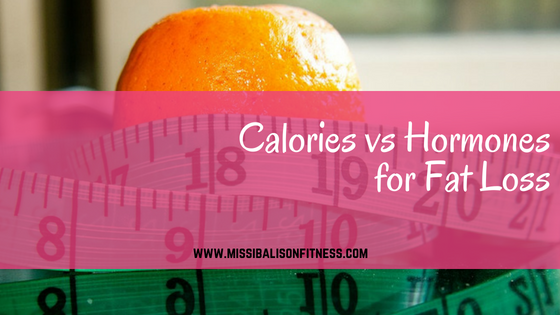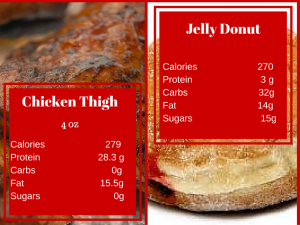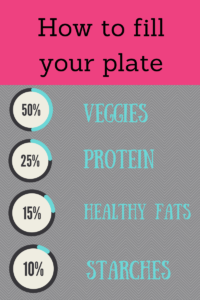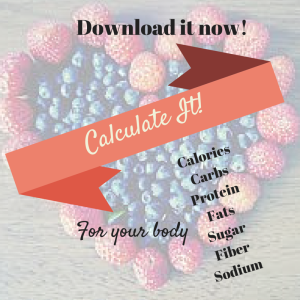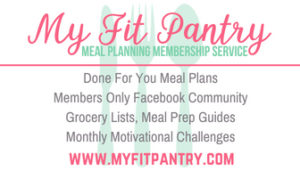When I first began my career in the fitness industry, I wholeheartedly believed that calorie counting was helping people reach their goals, lose fat, and get healthier by introducing them to one simple model we were all taught in our certification courses – the calories in-calories out model which says:
- 1 pound of fat = 3500 calories
- If you reduce caloric intake by 500 calories a day, 7 days a week you will lose 1 pound per week
- If you reduce caloric intake by 1000 calories a day, 7 days a week you will lose 1 pound per week
- You can do this by:
- Reducing caloric intake (eat less)
- Increasing caloric expenditure (exercise more)
- or both…reduce calories AND increase expidenture ( eat less, exercise more)
Thanks, see you at your next session…
Even while getting my degree in Exercise physiology this model was emphasized and very little emphasis was put on the hormonal impact of food and exercise.
As science has advanced it has become clear that in order to lose fat there are TWO necessary components:
- Caloric deficit
- Hormonal balance
After 23 years of helping clients lose fat and create healthier lives, I have noticed that as I began to teach about the hormonal balance side of things, clients stayed longer. Why?
1) Because they were finally getting results and
2) They found themselves soaking up and craving the knowledge they were gaining. They enjoyed “owning” the journey to better health
Before I go on, I want to sincerely apologize to those of you that I preached this calories in/calories out model to. We were all doing the best we knew how back then. Please read on so we can fix it 🙂
Calorie Counting is not the whole story
While calories are still definitely part of the equation in fat loss, the hormone balance is arguably MORE important as you will soon learn.
Let’s take a look at the calorie part of the equation first. Here is the breakdown of calories and macro nutrients in both a doughnut and a chicken thigh:
The calorie model assumes that you can eat 2000 calories a day of chicken or 2000 calories a day of donuts and get the same results. What do you think about that?
One study put two groups of men and women on two different eating protocols. Here is what happened…
Group One: Low fat, high carbohydrate diet. Women ate 1200-1500 calories, men ate 1500-1800 calories daily.
Group two: Low fat, high protein diet. Men and women ate 300 more calories daily than group one.
The high fat, high protein group lost weight more quickly.
The reason for this outcome is that food is information for fat burning as well as many other things.
Protein and fiber (both not found in doughnuts) and the calories that come with them have positive effects on the hormones that affect hunger, blood sugar, and fat burning. They control hunger, balance blood sugar, and create a fat burning environment in the body no matter how many calories are in them.
The opposite is true for the hormones that are produced when you eat food that either contain sugar or turn to sugar quickly in the body (ie, doughnuts, skittles, fruit juice, simple starchy carbohydrates – breads, pastas, pastries…) no matter how many calories are in them. These foods whether or not they contain the same number of calories as the protein and fiber filled foods create hormones that encourage fat STORAGE.
The low calorie diet served to the low fat, high carbohydrate group produced spikes in blood sugar which can:
- Increased Insulin (Fat storage hormone)
- Eventually caused a drop in said blood sugar leading to a strong desire to eat more of the wrong things later on.
The addition of fat would have helped to slow this process down, but their diet didn’t contain much. The lack of quality calories in their diet had negative affects on what was going on chemically in their body, not only storing fat but having and effect on their post meal behavior.
Restricting calories will cause the metabolism to push back
Our constant low blood sugar, hunger and grumpiness drive us to rebellion that looks like overeating foods that don’t carry many nutrients and won’t end up satisfying us longer than the few minutes that it takes to scarf them down. Does this sound familiar? The saddest part of this scenario 95% of people that diet by restricting calories end up failing. And even worse…
- 66% end up putting more weight back on because of the loss of precious muscle mass and the frustrated, compensatory behavior that often follows a low calorie diet
Now, many people will see some results while restricting calories…for a little while. But let’s take a look at what happens when we plateau.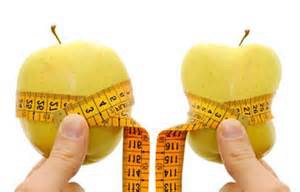
First, we may get frustrated and try to restrict a little more. The body DOES NOT like this. It has been paying attention for the past few weeks as the amount of calories you have fed it has been reduced. The body has been playing along but keeping an eye on things because it knows that it is smarter than you! ;). Your body’s main goal is survival so that you can continue being you! It has been appeasing your efforts by dropping some weight but unfortunately the body is not willing to get rid of the fat you have been storing because it is protecting that fat in case you decide to drop calories more and you need to live off of it. You body doesn’t know if you are dieting to look awesome in your bikini or swim trunks or if you are living in a holocaust situation. It just wants to survive this ordeal and fat is going to give it the biggest bang for its buck. Do you know what kind of weight you are losing? Sadly, it is water and muscle. Precious muscle that would have been used to burn fat to feed itself. You see, muscle is a very metabolically active tissue and your body knows this. If there is a famine in the land, the body wants to use up that muscle first so that if the hunger strike goes on too long it can burn the fat off slowly over a long period of time…just in case. Many people will nt stick to a calore restricted diet this long (nor should they) which is why the success rates as stated above are what they are.
When the body begins to slow down the weight loss (notice I didn’t say fat loss) to preserve itself. We think: “Ok, then, Since I am hungry all the time and I can’t really cut out too many more calories and function well, I will just add more exercise” Isn’t it funny how we think these things in our head and it all makes sense but when we see them on paper we go “What?? Why would you do that??” If you’re not having those thoughts yet, read on.
When we approach “dieting” with the eat less, exercise more mindset we are headed for certain disaster. By ignoring the body’s signal of a plateau we have just kicked the starvation mode up a notch. Now, much like our car, we are asking our machine to go farther on less fuel. The body cannot sustain this behavior for very long without detrimental effects. Those negative effects present themselves in the form of high cortisol levels that will strain the adrenal glands and as well as metabolic damage.
Metabolic damage is where the “66% end up putting weight back on” comes into play. The typical dieter can only sustain these insults to the body for so long before they “fall off the wagon”, return to their old eating habits but with less metabolically active muscle on board and they put the weight back on. Because they have less muscle fueling itself with their fat stores they will put on more weight than before.
Another thing to consider is the mindset that accompanies a calorie restriction protocol. If you have ever cut calories in an attempt to lose weight I am certain you have found yourself thinking these thoughts:
- “I can’t have that”
- “I’m hungry”
- “This is frustrating”
- “But I did so well today I deserve this”
- “What is the point”
- “Everybody else gets to eat what they want”
- “This sucks”
Your body may have felt the effects in this way:
- Increased hunger
- Decreased energy
- Bad moods
- increased thought and cravings for sweets and starches
I know that this theory of calories in calories out has been ingrained in us for such a long time but I beg of you …Please, don’t do it.
The solution can be found in making the right choices versus trying to eat the right amount – or a balance of the two.
Let’s talk about some solutions to this problem. First of all, when it comes to quantities of food or calories the safest bet is simply this approach:
- More active people should eat more
- Less active people should eat less
This can even vary day to day. On a less active day just pay a little closer attention to your food intake.
From the hormonal aspect, these are important things to consider when choosing what to eat:
- Protein stimulates the production of the hormone that turns on fat burning
- Protein takes additional calories to digest
- Sugar and starchy carbohydrates stimulate the production of insulin- a fat storage hormone
- Protein, fat and fiber (complex carbs- vegetables, whole grains) slow down the rate at which the starchy carbohydrates turn to sugar in the bloodstream – this lowers the amount of insulin that is produced and lessens the fat storage effects of these foods
To keep it simple, here is a great way to fill your plate to get a good balance of protein, carbs and fat for keeping blood sugars stable:
Notice I haven’t given you any specific calorie counting tools to follow here. That is because when you eat the right kinds of foods with tons of nutrients, your cells will be happy and the body will begin to regulate your hunger levels accordingly. You will be amazed at how your energy levels increase, fat comes off and your cravings drop when you feed your machine the right kinds of fuel.
Now I know there are some of you that have a strong need to count something so I will give you a tool to know if you are in the right ball park when it comes to calorie counts but you must promise me you will use it responsibly know that you know the importance of choosing foods that will keep your hormones in balance. Here you go:
Calories:
Men who are moderately active should multiply their weight in pounds by 15;
Women multiply by 12.
The resulting number is the total calories per day needed to maintain weight.
- Ex. a 200# moderately active male: 200# x 15 = 3000 calories per day
- Relatively inactive men should multiply their weight by 13 and women, by 10 to maintain weight.
For fat loss I would consider lowering caloric intake in small amounts at first and see how your body responds. Be gentle. The body does not like sudden moves. For those of you that want to dig a little deeper I created a Cheat Sheet to teach you how to calculate some important items to include in your nutritional plan:
Click Here to Grab your Cheat Sheet
I hope that this post helped a light bulb go on in your mind as you figure out this whole “fat loss thing”. If you are excited about your new discovery and are anxious to get started on creating a whole new way of eating that will make you feel awesome and that you can easily do for the rest of your life I would like to invite you to join in on …. The My Fit Pantry Meal Planning Membership!
Choosing the right foods for your best health and metabolism function can be so overwhelming and draining! The 3 main goals of the My Fit Pantry Meal Planning Membership are:
- To help busy people stay on track with their healthy eating without the stress AND while trying out new delicious recipes
- To educate members down the path of their best nutritional life ever. We believe that knowledge inspires motivated and motivated people keep moving toward their goals!
- To make food FUN again! It’s time to lighten up and get back to what food is all about… nourishment to the body!
Head over to www.myfitpantry.com to learn more!
With all of this said it is very important to remember that each of us has a metabolic individuality. Our lifestyles, stresses, sleep habits, exercise needs, obstacles, hormonal issues and mindsets are unique but these are some great tips to get you started in the right direction.
Peri menopausal women… THIS IS FOR YOU! Do not wait until these changes are upon you. Learn how to make adjustments NOW before they creep up on you! The 6 week Menopausal Metabolic Mastery Program will employ my Hormonal Reboot Method. Click HERE to find out more!

